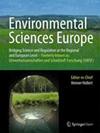Avian reproduction studies for regulatory risk assessment are undergoing review by regulatory authorities, often leading to requests for statistical re-analysis of older studies using newer methods, sometimes with older study data that do not support these newer methods. We propose detailed statistical protocols with updated statistical methodology for use with both new and older studies and recommend improvements in experimental study design to set up future studies for robust statistical analyses. There is increased regulatory and industry attention to the potential use of benchmark dose (BMD) methodology to derive the endpoint to be used in avian reproduction studies for regulatory risk assessment. We present benefits and limitations of this BMD approach for older studies being re-evaluated and for new studies designed for with BMD analysis anticipated. Model averaging is recommended as preferable to model selection for BMD analysis. Even for a new study following the modified experimental design analyses, with BMD methodology will only be possible for a restricted set of response variables. The judicious use of historical control data, identification of outlier data points, increased use of distributions more consistent with the nature of the data collected as opposed to forcing normality-based methods, and trend-based hypothesis tests are shown to be effective for many studies, but limitations on their applicability are also recognized and explained. Updated statistical methodologies are illustrated with case studies conducted under existing regulatory guidelines that have been submitted for product registrations. Through the adoption of alternative avian reproduction study design elements combined with the suggested revised statistical methodologies the conduct, analyses, and utility of avian reproduction studies for avian risk assessments can be improved.


